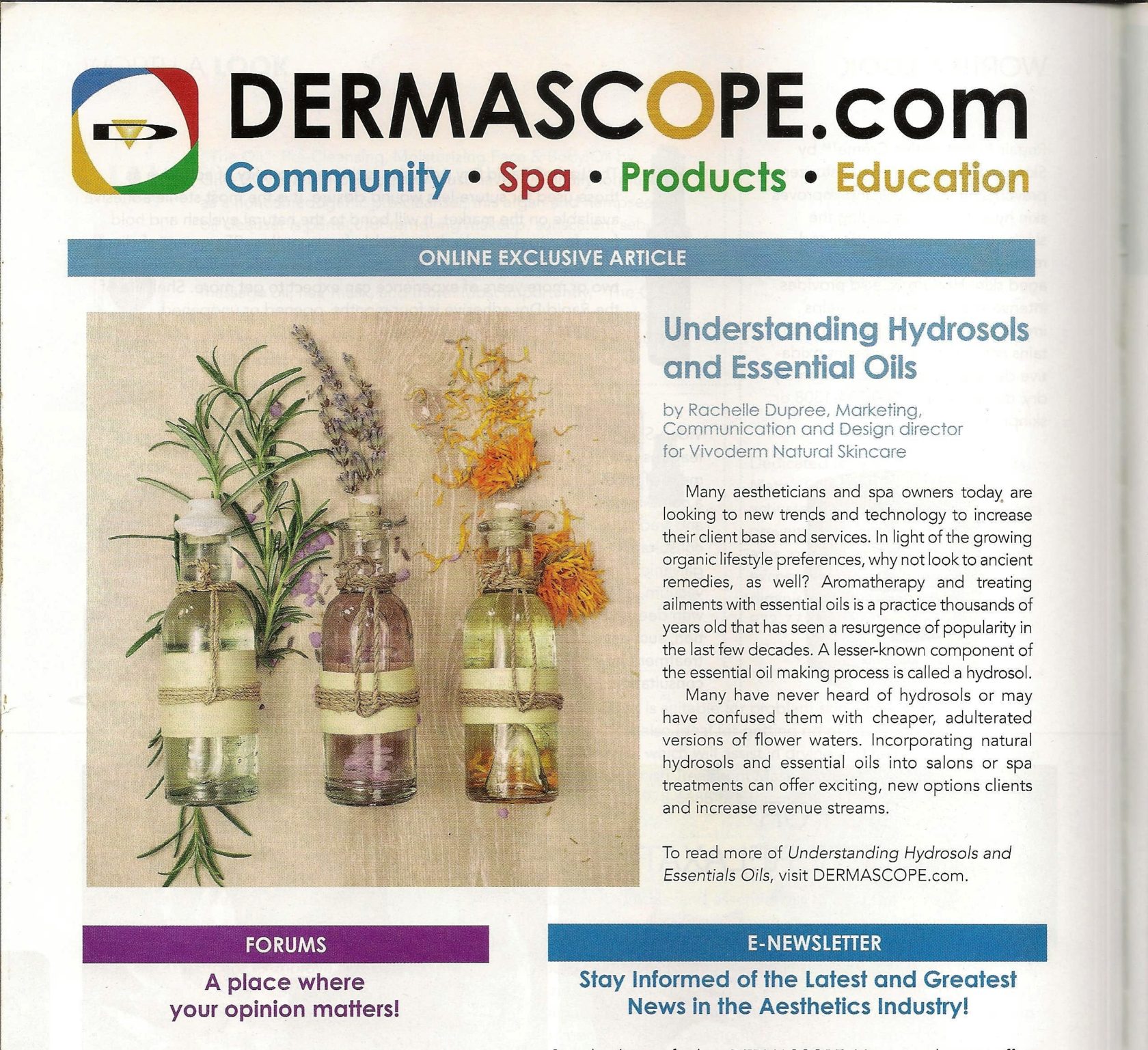
Written by Rachelle Dupree, marketing, communication, and design for Vivoderm Natural Skincare Published in the December 2017 issue of Dermascope Magazine © https://www.dermascope.com/wholistic/understanding-hydrosols-and-essential-oils Many aestheticians and spa owners today are looking to new trends and technology to increase their client base and services. In light of the growing organic lifestyle preferences, why not look to ancient remedies. as well? Aromatherapy and treating ailments with essential oils is a practice thousands of years old that has seen a resurgence of popularity in the last few decades. A lesser-known component of the essential oil making process is called a hydrosol. Many have never heard of hydrosols or may have confused them with cheaper, adulterated versions of flower waters. Incorporating natural hydrosols and essential oils into salons or spa treatments can offer exciting, new options to clients and increase revenue streams. WHAT IS A HYDROSOL? Hydrosols are the condensate result of steam distillation of plants or flowers produced when creating a natural essential oil. The top floating layer of essential oil is removed and the remaining 90 percent of the water is considered hydrosol. Hydrosol is a chemistry term meaning “water solution.” In Latin, “hydro” – meaning water – and “sol” – meaning solution. The terms “hydrosol” and “herbal distillates” are most common to the United States. In France, the top producer of modern fragrances, the term changes to “hydrolait,” meaning water-milk. The terms, floral water, herbal water, toilet water, and aqua vitae are commonly interchanged with hydrosol — but, beware. The two products can differ vastly depending on the producer. A pure hydrosol will be solely plant-based and food grade — meaning edible. Typical floral waters you may find in supermarkets, drug stores, or ethnic food shops may contain non-organic ingredients such as alcohol, chemically produced fragrance or man-made food dyes. Most often they are infused with essential oils —which is not the same thing as a true hydrosol. Pure hydrosols will contain some of the same aromatic molecules as essential oils but in a much lower concentration. They are typically clear and colorless and have a light, trace aroma of the original plant or flower. Hydrosol pH Data on hydrosol pH varies, but most can be found in the 3 to 7 range; three being more acidic and seven being close to neutral, depending on the plant used. Additionally, being organic, a true hydrosol will not have the extended shelf life…
Read More